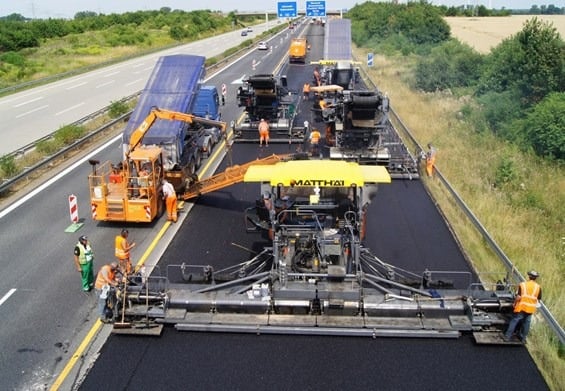You will need to be able to distinguish between the various layers of bitumen pavement. These are some details you need to know. The base course, which is the fundamental structural layer of bitumen roads, will distribute traffic load across the pavement. This layer is not intended for traction and has very little shear strength.
The asphalt layer is the topmost layer on a Bitumen Pavement
The asphalt layer at the top of a bitumen pavement’s surface is entirely asphalt. This layer typically has a thickness of 4 cm, but it can be adjusted to suit your needs and budget. This layer is exposed to traffic laws and weather so it must be high quality. Although pavement can fade in as little as 12-15 years, it can be extended with wear-resistant aggregates. Too thin surfacing can cause cracking due to fatigue and damage from subgrade soils.

The strength of the construction site will be affected by water
The subgrade is another important layer. Subgrade is composed of compacted natural dirt. The amount of moisture and water in the subgrade must be considered by a design engineer. The strength of the subgrade after construction will be affected by water. Proper drainage is essential to ensure strength training consistency. Secondary aggregates and recycled demolition materials make up the capping materials. Geogrids can be used to stabilize the soil.
A subgrade is mainly Bitumen Pavement natural soil that has been compacted
A subgrade is mainly composed of natural soil. The subgrade should be assessed by the engineer to determine its strength and condition. The bitumen pavement’s post-construction strength can also be affected by water, so the engineer must ensure that the subgrade is properly drained. The capping materials include secondary aggregates, capping materials and recycled demolition materials. A stabilisation geogrid can be used in certain cases to reduce the thickness of the asphalt.

Bitumen Pavement is a great binding agent and versatile substance
Bitumen is a versatile material that can be used as a binding agent. Bitumen is used to build roads, bridges and other structures. It is also the most durable surface for pedestrians and cars. It can also be used for commercial purposes. It is difficult to create a tarmac-surface, and there are a few layers that are easier and more common than others.
Subgrade is the layer that comes in contact with more traffic loads and provides friction and smoothness. Subgrade is the layer that comes in contact with traffic loads and provides friction and smoothness. It also prevents water from entering the underlying materials. The strength of the post-construction structure can be affected by the conditions in the subgrade. If you’re building a road in dry climates, the tarmac layer will be your most important consideration. Subgrade is an integral part of bitumen pavements. It provides strength and durability to the surface.

A bitumen pavement’s subgrade is an integral part. It provides strength and durability. The subgrade plays a major role in bitumen pavement strength. Before building a road, the designer must carefully consider the conditions. Most subgrades are made from natural and secondary aggregates. The subgrade should be strong enough to withstand heavy traffic.
When it comes to bitumen pavements, the topmost layer is called the surface course. This layer of bitumen comes in direct contact with traffic and provides the necessary friction and smoothness. It also prevents surface water from entering the underlying materials. The surface course can be divided into two layers: the wear course and intermediate/binder courses.
The subgrade is the next layer. The subgrade is mainly composed of compacted natural earth. Before designing a road, it is important to assess the strength training of the subgrade. Although the subgrade can be a weak spot in many cases, a strong subgrade will resist cracking and resist rutting. Layered pavements should be watertight to ensure safety for pedestrians.
